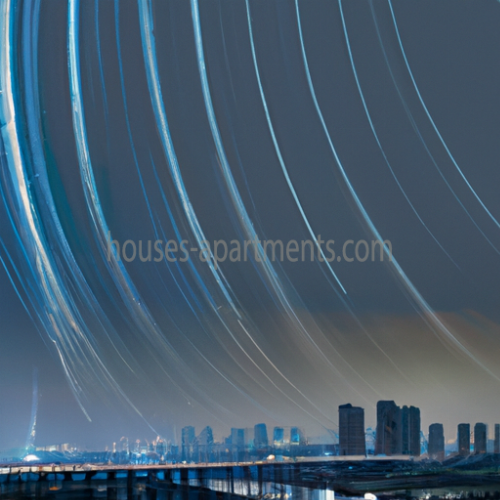Sublime architecture takes into consideration the impact of light pollution and the night sky in its design by implementing various strategies aimed at minimizing the negative effects of excessive artificial lighting. Here are some ways in which sublime architecture addresses these concerns:
1. Incorporating Dark Sky Design Principles: Sublime architecture follows the principles of dark sky design, aiming to reduce light pollution and preserve the night sky. This involves using downward-facing lights to minimize light spill and glare, and avoiding excessive and unnecessary lighting.
2. Controlled Nighttime Illumination: Sublime architecture uses controlled and purposeful nighttime illumination to highlight specific architectural features or focal points. By emphasizing key elements, the design eliminates the need for excessive lighting that may contribute to light pollution.
3. Optimal Lighting Levels: The design ensures that lighting is only used when necessary, and at appropriate levels. By using efficient lighting systems that are carefully calibrated, sublime architecture minimizes unnecessary ambient light and thus reduces light pollution.
4. Shielding and Directing Light: To prevent light trespass and glare, sublime architecture incorporates methods to shield and direct light sources. Attentive planning and design techniques, such as using light fixtures with directed beams or incorporating shielding elements, help focus illumination where it is needed, while minimizing its effects beyond the intended area.
5. Natural Lighting Integration: Sublime architecture also emphasizes the use of natural lighting during nighttime, wherever possible. This includes creating openings like skylights or large windows that allow natural moonlight and starlight to enter the space, reducing the reliance on artificial lighting altogether.
6. Sensitivity to Astronomical Observatories: In areas near astronomical observatories or designated dark sky regions, sublime architecture considers specific guidelines and regulations to prevent interference with scientific observations. This may involve implementing additional measures to minimize light pollution, such as using special light fixtures or reducing the overall intensity of lighting.
By incorporating these strategies, sublime architecture strives to create spaces that not only function effectively at night but also respect the night sky and reduce the negative impacts of light pollution on the environment and human well-being.
Publication date:

